Clay soil has fine particles that are closely packed together. So, it has a high water-holding capacity and can retain water for an extended period.
While this can be advantageous in dry climates, it can also make things susceptible to flooding during excessive rainfall or poor drainage, resulting in waterlogged garden clay soil.
As we know too well, it rains a lot in the UK.
You’re probably wondering:
- How do I stop my garden from flooding clay soil?
- How do you reduce water retention in clay soil?
At Drainage Superstore, we’re here to help! That’s why we put together a comprehensive guide on how to stop a clay garden from flooding as part of our Flood Hub.
Without further ado, let’s jump right in.
Table of contents:
- Top garden drainage solutions for clay soil in the UK
- Planting the right shrubs and plants
- Using compost
- Adding gravel to soil for drainage
- Installing a French drain
- Considering alternatives to grass
- How to improve drainage in a clay soil lawn in the UK
Top garden drainage solutions for clay soil in the UK
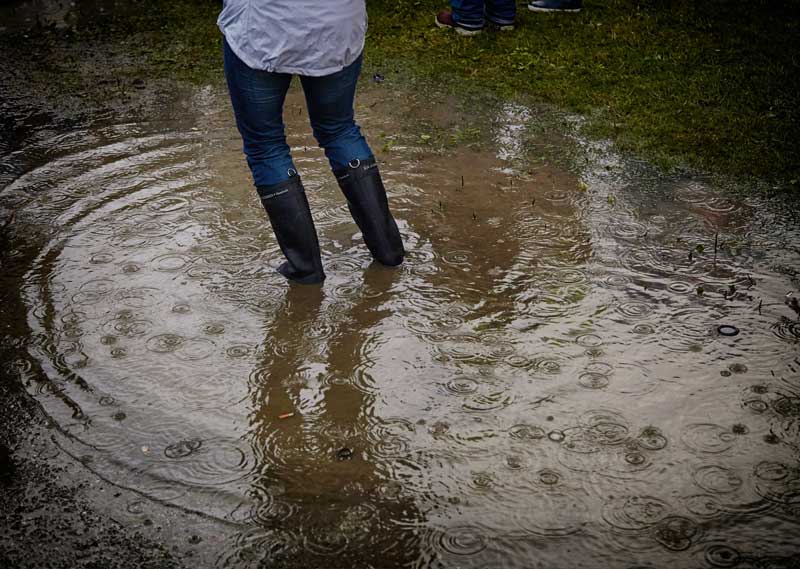
The best way to improve drainage in clay soil will depend on various factors, including the specific characteristics of the clay soil and the local climate.
Still, some common drainage solutions for waterlogged garden clay soil include planting appropriate vegetation, utilising compost, adding gravel and installing a French drain.
On the other hand, if bad goes to worse, you can always consider alternatives to grass, such as artificial grass.
With that in mind, let’s take a closer look at each one of these popular garden drainage ideas.
Planting the right shrubs and plants
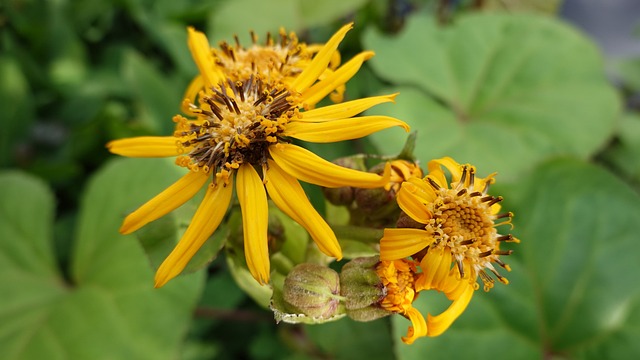
Planting the right vegetation in a clay soil garden can help prevent flooding by improving soil structure and increasing water absorption. As we mentioned earlier, clay soil is known for its poor drainage, as it has fine particles that compact tightly, leaving little space for water to infiltrate.
The good news is:
Choosing plants that are well-suited to clay soils can enhance the soil’s structure and water-holding capacity. This way, you can avoid waterlogging while enhancing your garden’s aesthetic appeal at the same time.
Here’s the scoop:
Deep-rooted plants like trees and shrubs such as willows and dogwoods can break up compacted clay, creating channels for water to flow through and reducing the risk of surface garden flooding.
Additionally, these plants can absorb excess moisture and release it back into the atmosphere, reducing waterlogging in the soil.
So, what are some suitable plants and evergreen shrubs for wet soil in the UK?
Here are a few popular options:
Alder
Alder trees (Alnus glutinosa) thrive in wet conditions and are excellent for clay soils. Their roots can help break up compacted soil and improve drainage.
Willow
Willows (Salix species) are known for their adaptability to wet soils. Thanks to their extensive root system, they can easily absorb excess water, making them excellent choices for flood-prone areas.

Dogwood
Many dogwood species, like Hedgerow’s Gold (Cornus sericea), can tolerate wet conditions and clay soil. Their fibrous roots are especially good at stabilising the soil. As a bonus, their vivid red, golden and green hues will add an impressive splash of colour to your garden.
Common rush
A perennial grass-like plant, the common rush (Juncus effusus) is well-suited for wet soils and can aid in water absorption.
Bog rosemary
A low-growing evergreen shrub that thrives in wet and acidic soils, bog rosemary (Andromeda polifolia) is perfectly suited to clay gardens in the UK. Most varieties have lovely pink flowers which easily complement various garden designs.
Bog myrtle
Another one of those UK shrubs that soak up water, bog myrtle (Myrica gale) has aromatic leaves and can help with water management.
Pieris
These evergreen shrubs, such as Pieris japonica, can handle wet clay soils and offer ornamental value with their beautiful foliage and flowers.
Marsh marigold
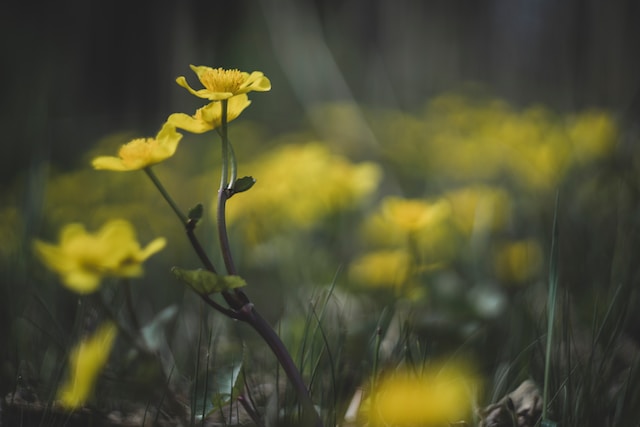
A perennial with bright yellow flowers that can tolerate wet soils, marsh marigold (Caltha palustris) adds a lovely pop of colour to your garden.
Last but certainly not least…
Ligularia
Ligularia plants, like Ligularia dentata and Ligularia przewalskii, are known for their moisture-loving nature and unique foliage.
Using compost
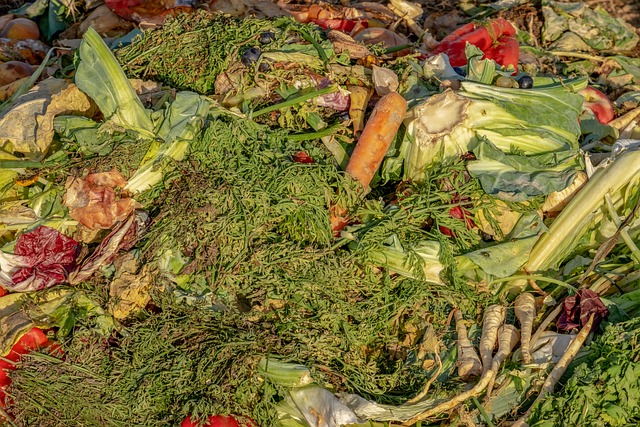
Using compost can significantly enhance garden drainage in clay soil, so you won’t have to deal with waterlogged soil. That’s because when it’s mixed into clay soil, compost acts as a soil conditioner, improving its structure.
The thing is:
Compost is rich in organic matter, which introduces larger particles and organic content to the clay, increasing aeration and promoting better water infiltration.
In addition, the porous nature of compost allows it to hold excess moisture while still providing space for air, which stops the buildup of standing water in your garden. As a result, this improved soil structure creates channels for water to flow through, reducing surface runoff and the risk of flooding in your garden.
But wait! There’s more:
The organic matter in compost serves as a food source for beneficial microorganisms, which aid in breaking down clay particles and further improving the soil’s structure over time. As the compost decomposes, it enhances the overall health of the soil and its ability to absorb and retain water, making it more resilient to heavy rains.
The best part? You can easily make your own compost, which means this is one of the more sustainable, eco-friendly garden flooding solutions listed here.
Next:
Adding gravel to soil for drainage
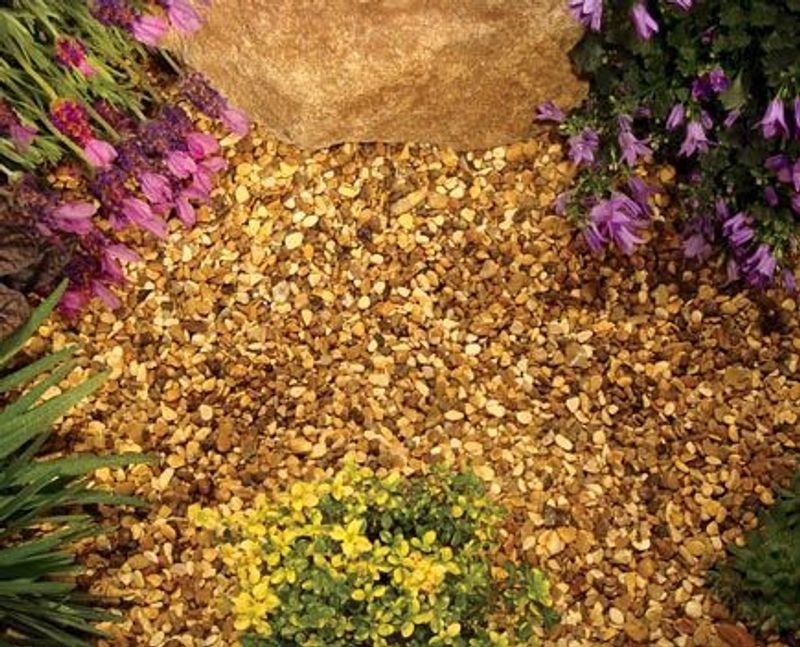
Gravel is widely used to create practical yet highly elegant gravel driveways and gravel gardens. It’s also great against water logging if you have clay soil, as it can provide several benefits.
Check this out:
Gravel is a coarse, porous material that allows for better water movement and can help prevent waterlogging in soil. When mixed into compacted or poorly draining soils, gravel creates air pockets and channels, facilitating the flow of excess water through the soil profile.
So, this prevents water from pooling on the surface and minimises the risk of root rot in plants that are susceptible to overly wet conditions. The coarse nature of gravel also aids in breaking up compacted soils, improving their overall structure and promoting better aeration, which is essential for root health.
What’s more:
Gravel can also enhance soil stability and prevent erosion. When used as a top layer or mulch, it helps reduce soil erosion by protecting the soil surface from the impact of heavy rain and run-off.
It gets even better, as gravel can also deter weed growth and make garden maintenance easier by providing a barrier that restricts weed establishment.
Last but not least:
You can also combine the use of gravel with one of our other solutions. Why not use landscaping gravel for flower beds surrounding some of the shrubs and plants we suggested earlier? A highly functional yet extremely stylish way to improve soil drainage.
Installing a French drain
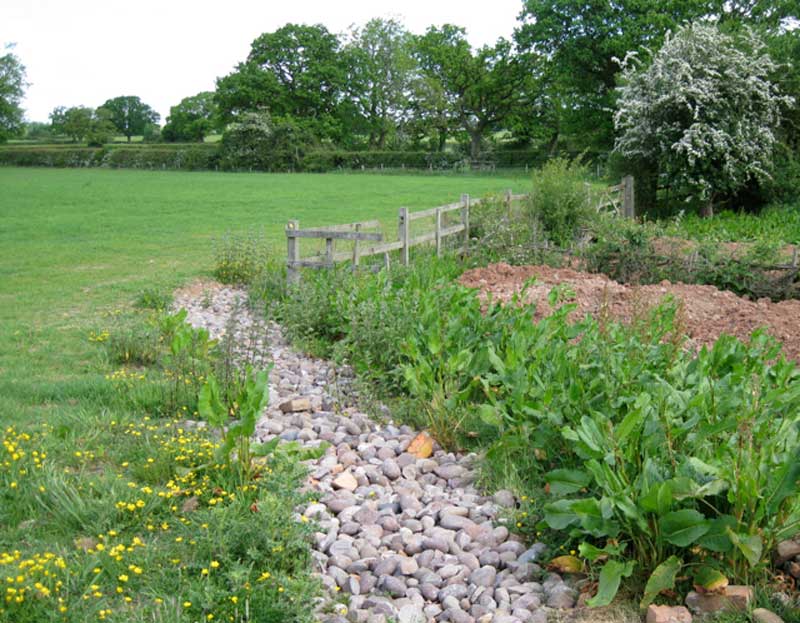
A French drain is one of the most effective ways of improving soil drainage, especially in areas that are prone to flooding, such as floodplains.
Not sure what exactly that is?
Here’s the deal:
A French drain is a trench filled with gravel or rock and a perforated pipe designed to manage lawn drainage effectively. It’s particularly useful in managing groundwater, surface water or rainwater runoff. That’s because it helps distribute and disperse the water across a broader area or lead it to a more suitable outlet, effectively reducing the risk of soil erosion and moisture-related issues.
Key takeaway:
By efficiently draining water away from critical areas, French drains can help maintain a drier, more stable environment, protect properties from water damage and improve overall clay soil drainage and landscaping conditions.
Want to find out how to install a French drain? Our dedicated guide has you covered.
Considering alternatives to grass
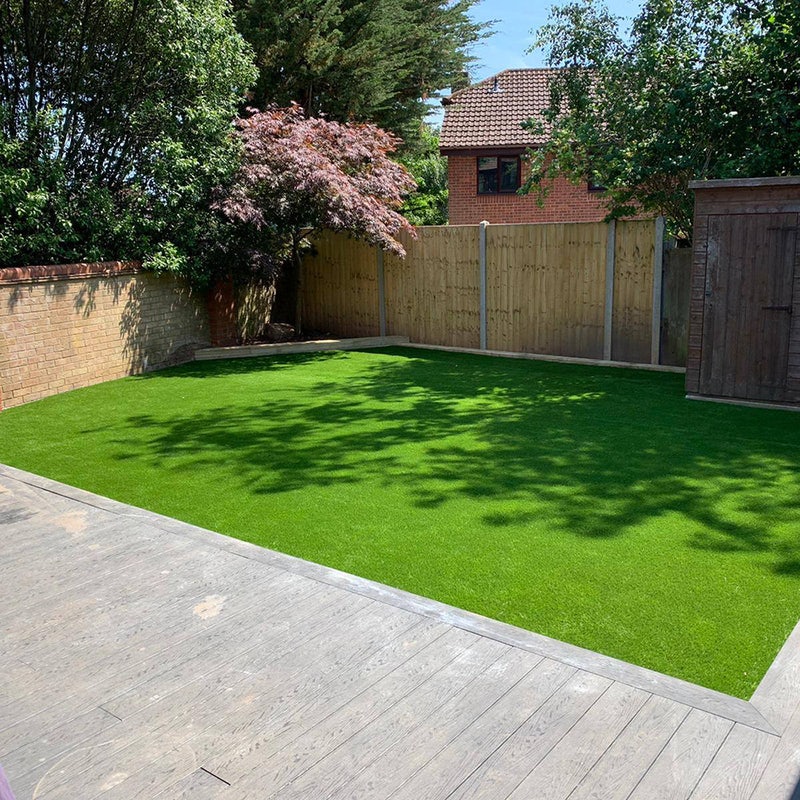
If all else fails, and you still find yourself looking dejectedly at waterlogged garden clay soil and waterlogged plants, you might want to consider some alternatives to natural grass.
Now:
It may sound counterintuitive at first, but artificial grass could be the ideal solution for you. While artificial grass itself doesn’t directly improve clay soil drainage or prevent flooding, as it doesn’t have the same soil-enhancing properties as, say, mulch or compost, it can indirectly contribute to better drainage by providing a permeable surface underneath.
Here’s how:
When installed correctly, artificial grass is often placed over a base of crushed rock or aggregate, which serves as a drainage layer. This allows rainwater to infiltrate the ground more efficiently, reducing surface runoff and helping prevent flooding.
In this way, artificial grass can work in conjunction with proper drainage systems to mitigate the risk of waterlogging and flooding in clay soil areas.
Aside from fake grass, other alternatives to natural grass you might want to explore are:
- Paving
- Cobbles
- Gravel
How to improve drainage in a clay soil lawn in the UK
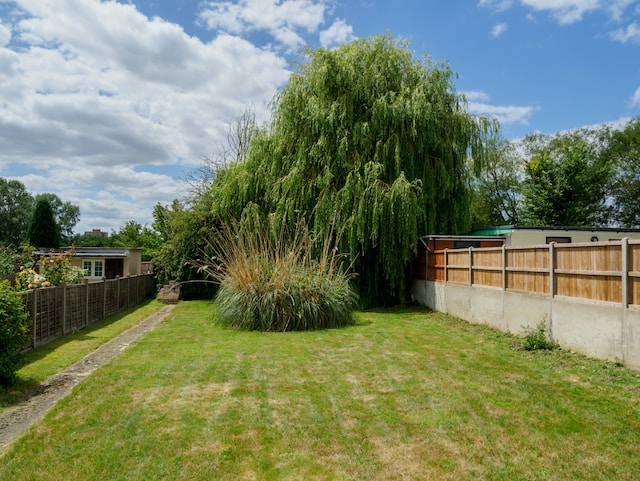
As weather patterns in the UK become more and more unpredictable, it’s not unusual to experience long periods of drought followed by extreme flash flooding.
The result?
A flooded garden, complete with hopelessly waterlogged garden clay soil.
Luckily, now that you know how to stop a clay garden flooding, you’re well prepared to take the necessary precautions.
If you made it this far, you’re probably wondering:
- What is the best drainage system for clay soil?
As we’ve hinted at occasionally, most of our suggestions for how to make soil well-drained aren’t mutually exclusive.
In fact, we would recommend that you embrace more than one – this way, you’re guaranteed to get the best results whatever the weather. Don’t forget to check out our Flood Hub for more tips and advice!










